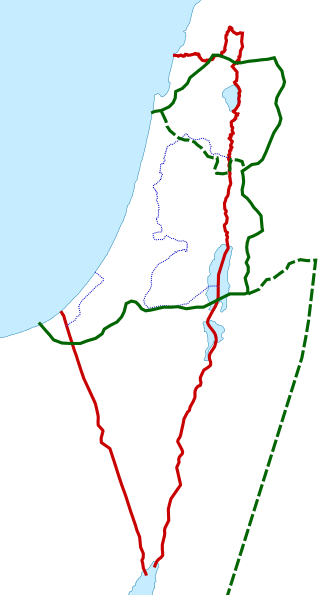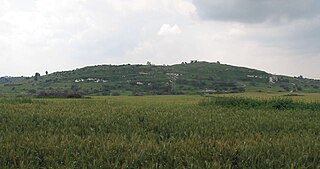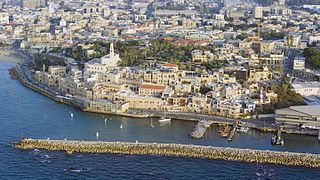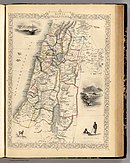
The history of Israel covers an area of the Southern Levant also known as Canaan, Palestine or the Holy Land, which is the geographical location of the modern states of Israel and Palestine. From a prehistory as part of the critical Levantine corridor, which witnessed waves of early humans out of Africa, to the emergence of Natufian culture c. 10th millennium BCE, the region entered the Bronze Age c. 2,000 BCE with the development of Canaanite civilization, before being vassalized by Egypt in the Late Bronze Age. In the Iron Age, the kingdoms of Israel and Judah were established, entities that were central to the origins of the Jewish and Samaritan peoples as well as the Abrahamic faith tradition. This has given rise to Judaism, Samaritanism, Christianity, Islam, Druzism, Baha'ism, and a variety of other religious movements. Throughout the course of human history, the Land of Israel has come under the sway or control of various polities and, as a result, it has historically hosted a wide variety of ethnic groups.

Gaza, also called Gaza City, is a Palestinian city in the Gaza Strip. Prior to the 2023 Israel–Hamas war, it was the most populous city in the State of Palestine, with 590,481 inhabitants in 2017.

Philistia was a confederation of five main cities or pentapolis in the Southwest Levant, made up of principally Gaza, Ashkelon, Ashdod, Ekron, and Gath, and for a time, Jaffa.

Isdud was a Palestinian village tracing back to at least the Mamluk period. In the 1940s the village had thousands of Arab and Jewish inhabitants, but was largely depopulated in the 1948 Arab-Israeli War. By 1992, only ruins remained.

The Jezreel Valley, or Marj Ibn Amir, also known as the Valley of Megiddo, is a large fertile plain and inland valley in the Northern District of Israel. It is bordered to the north by the highlands of the Lower Galilee region, to the south by the Samarian highlands, to the west and northwest by the Mount Carmel range, and to the east by the Jordan Valley, with Mount Gilboa marking its southern extent. The largest settlement in the valley is the city of Afula, which lies near its center.
The population of the region of Palestine, which approximately corresponds to modern Israel and the Palestinian territories, has varied in both size and ethnic composition throughout the history of Palestine.

Palestine is a geographical region in West Asia. It is usually considered to include modern-day Israel and the State of Palestine, though some definitions also include parts of northwestern Jordan. Other historical names for the region include Canaan, the Promised Land, the Land of Israel, or the Holy Land.

The Jaffa orange also known as Shamouti orange, is an orange variety with few seeds and a tough skin that makes it particularly suitable for export.

Salamah was a Palestinian Arab village, located five kilometers east of Jaffa, that was depopulated in the lead-up to the 1948 Arab-Israeli War. The town contains the supposed grave of Salama Abu Hashim, a companion of the Islamic prophet Muhammad. His tomb, two village schools, and ten houses from among the over 800 houses that had made up the village, are all that remain of the structures of the former village today.

Tell es-Safi was an Arab Palestinian village, located on the southern banks of Wadi 'Ajjur, 35 kilometers (22 mi) northwest of Hebron which had its Arab population expelled during the 1948 Arab–Israeli war on orders of Shimon Avidan, commander of the Givati Brigade.

Jarisha was a Palestinian Arab village located 200 meters (660 ft) from the ancient site of Tell Jarisha, on the south bank of Al-Awja. After the establishment of Tel Aviv, it was one of five Arab villages to fall within its municipal boundaries. Jarisha was depopulated in the lead up to the 1948 Arab-Israeli war.

Strategically situated between three continents, the region of Palestine has a tumultuous history as a crossroads for religion, culture, commerce, and politics. The area has been controlled by many kingdoms and powers, including Ancient Egypt, Ancient Israel and Judah, the Persian Empire, Alexander the Great and his successors, the Hasmoneans, the Roman Empire, several Muslim caliphates, and the crusaders.
Following are timelines of the history of Ottoman Syria, taken as the parts of Ottoman Syria provinces under Ottoman rule.

Abu Kabir was a satellite village of Jaffa founded by Egypt following Ibrahim Pasha's 1832 defeat of Turkish forces in Ottoman era Palestine. During the 1948 Palestine war, it was mostly abandoned and later destroyed. After Israel's establishment in 1948, the area became part of south Tel Aviv. Officially part of Giv'at Herzl, the adjacent Jewish neighborhood, the name Abu Kabir continued to be used. Part or all of Abu Kabir was officially renamed Tabitha by the Tel Aviv municipality in 2011.

Jaffa, also called Japho or Joppa in English, is an ancient Levantine port city founded by the Canaanites that is now part of southern Tel Aviv, Israel. Sitting atop a naturally elevated outcrop on the Mediterranean coastline, it was a strategic location that exchanged hands repeatedly in ancient Near East history, and was also contested during the Crusades, when it presided over the County of Jaffa and Ascalon.
The timeline of the Palestine region is a timeline of major events in the history of Palestine. For more details on the history of Palestine see History of Palestine. In cases where the year or month is uncertain, it is marked with a slash, for example 636/7 and January/February.

The Army of the Holy War or Holy War Army was a Palestinian Arab irregular force in the 1947–1948 civil war in Mandatory Palestine led by Abd al-Qadir al-Husayni and Hasan Salama. The force has been described as Husayni's "personal" army. The Arab League set up the Arab Salvation Army as a counter to the Army of the Holy War while, in practice, the Arab governments prevented thousands of volunteers from joining either force.
The following is a timeline of the history of the city of Haifa, Israel.
The following is a timeline of the history of the city of Hebron, West Bank, Palestinian territories.

The Latrun salient is an area of the West Bank that protrudes into Israeli territory. It is surrounded by a strip of territory covering 46.4 square kilometres (17.9 sq mi), that has the formal status of a no man's land (NML) between Israel and Palestine. Israel considers the NML a part of its state, while Palestinians regard it as part of the West Bank.
















